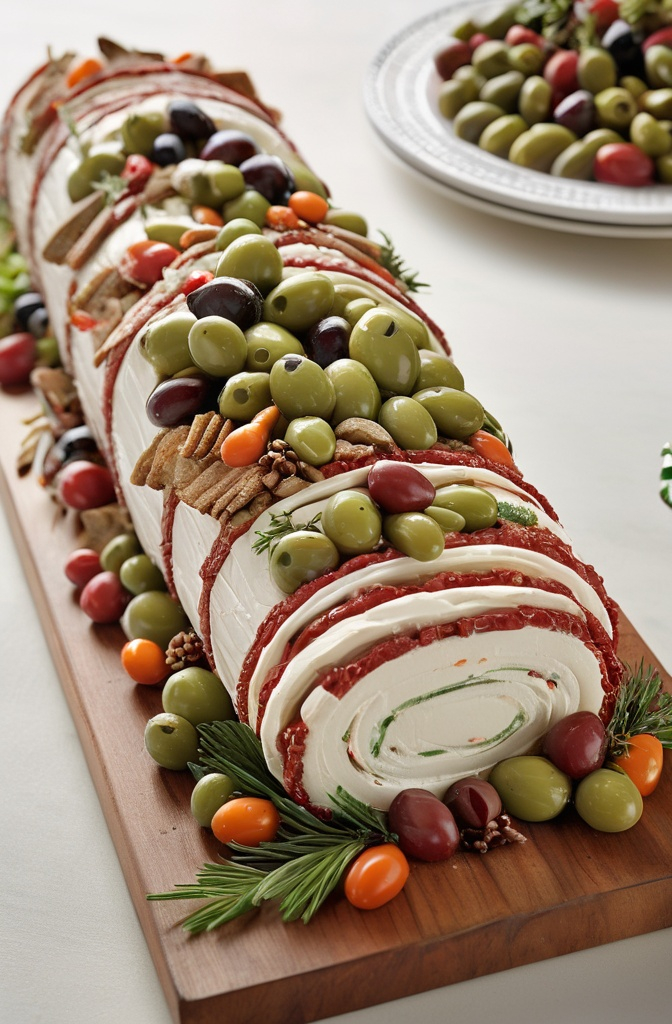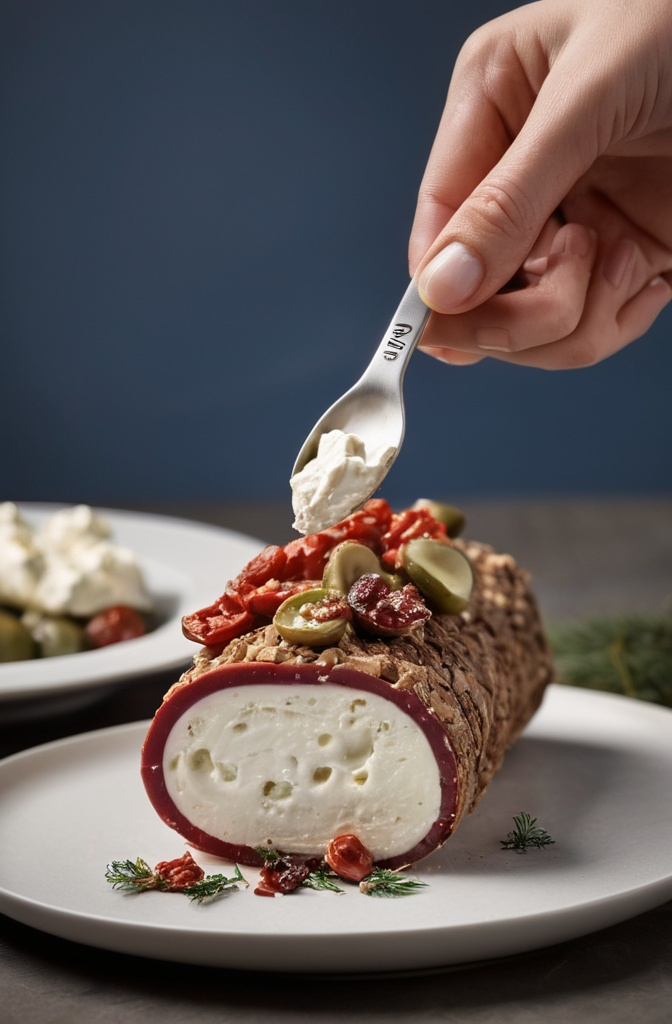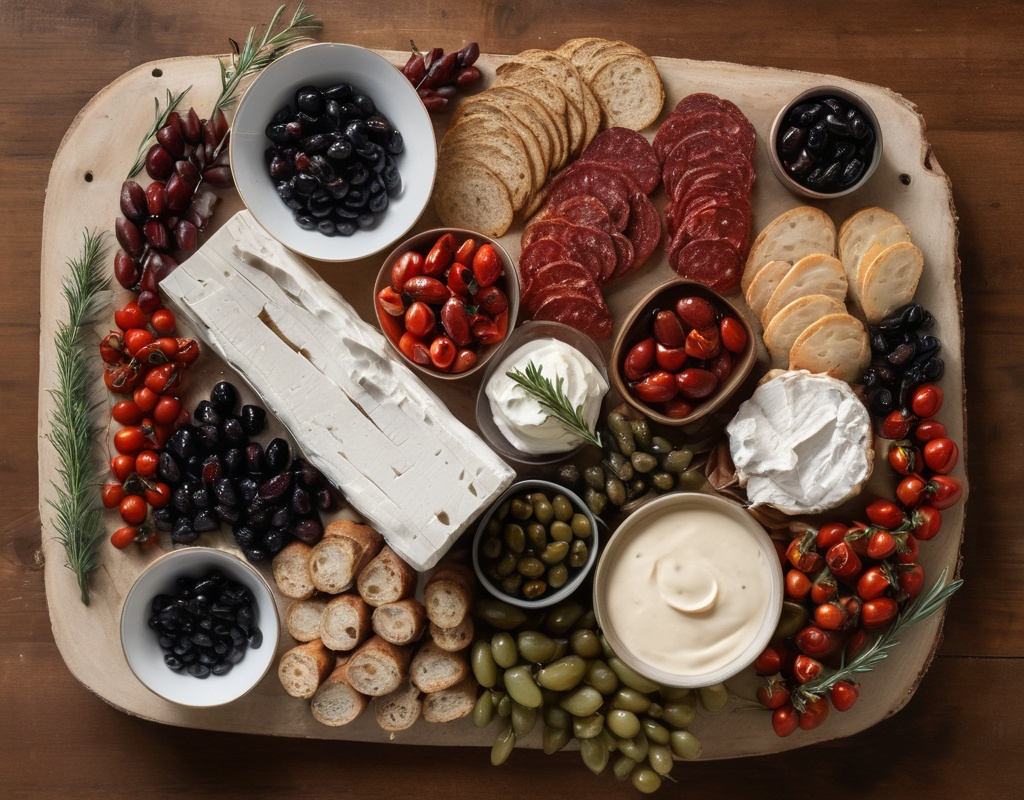So here’s the thing—holiday appetizers are a battleground. Every host wants the one dish that everyone circles back to, again and again. That centerpiece. That show-stopper. And nine times outta ten, it ain’t the fancy-shmancy tartlets or the microgreen-topped canapés. Nope. It’s the humble, glorious, flavor-bomb that is the antipasto cream cheese log. Underrated? Absolutely. Overcomplicated? Never. But when done right, this log hits every sensory note from creamy and tangy to salty, sweet, sharp, and umami-deep.
This article breaks down why the antipasto cream cheese log isn’t just a crowd-pleaser—it’s a pro move. And if you’re in the industry, you need this in your arsenal. Whether you’re catering 200 or plating for twelve at a chef’s table, this is the kind of starter that does a lot of heavy lifting with very little fuss.
What Even Is It?
Think antipasto platter meets cheese log. Classic Italian flavors—salami, olives, artichokes, roasted peppers—folded into or layered atop a cool, firm log of cream cheese, goat cheese, or a blend. It’s sliceable, spreadable, eye-catchin’, and, most importantly, absolutely craveable.
Not to be confused with retro 1950s cheese balls, this version is layered with complexity and finesse. And you don’t have to gild the lily. Just assemble with intention and let it speak for itself.
The Cheese: Not All Bases Are Created Equal
Start here because, let’s be honest, the cheese is the stage. Cream cheese is the classic base, but for a richer, deeper profile, consider blending in goat cheese or mascarpone. I’ve seen chefs incorporate a whisper of blue cheese or a dusting of Parm for added funk. And if you’re scaling? Go with cream cheese as your canvas—it’s stable, holds form, and plays nice with others.
Pro Insight: Use full-fat. Always. Don’t even think about low-fat. It’ll split, weep, and leave you with a sad, soggy mess when left out on the buffet for more than 30 minutes.
Also, temperature matters. Bring the cheese to just below room temp before shaping—it needs to be pliable but still firm enough to hold its form. If it’s too soft, it won’t bind with your mix-ins. Too cold, and it’s like spreading spackle.
The Antipasto Mix: Salt, Sweet, Crunch, Tang
Here’s where artistry comes in. You want contrast—texture, flavor, color. Too many salty components and you’ll be chasing guests down with a water pitcher. Too much sweet? It’s dessert.
An ideal antipasto mix includes:
- Chopped green and Kalamata olives (for salt, acid)
- Roasted red peppers (for sweet-smoky depth)
- Marinated artichokes (slightly tangy, rich)
- Cured meats—soppressata, salami, or even diced prosciutto
- Sun-dried tomatoes (chewy, savory intensity)
- Fresh herbs like parsley, thyme, or basil
Don’t go crazy with proportions. Keep your chopped mix to about 25–30% of your cheese base by volume. Overloading will cause structural issues—you want it flavorful, not collapsing like a soggy subway sandwich.
Chef’s Note: Always blot oily components. Wet ingredients make for leaky logs. Paper towels are your best mate here.

Shape and Chill: It’s Not Just a Log—It’s a Sculpture
Once your mixture is combined, shape it on parchment into a log, a ring, a dome—whatever suits the vibe. I’ve even seen some shape it like a Christmas tree with sliced olives as “ornaments.” Cheeky? Maybe. But undeniably festive.
Wrap it tight. Chill for at least 2 hours, but overnight is best. This does two things: solidifies structure and lets flavors marry. A rushed log is a sad log. It’ll taste like disconnected puzzle pieces.
Quick Tip: Use a mold or plastic wrap inside a loaf tin to get those perfect, crisp edges if going formal. Otherwise, rustic is always in fashion.
Toppings: Where Drama Meets Design
Now for the pièce de résistance. Don’t just dump a handful of chopped stuff on top and call it done. Think like a painter. Create a mosaic.
Use whole slices of salami folded like flowers. Fan out pepper strips. Sprinkle pistachios or pine nuts for crunch. Drizzle with olive oil. Maybe a little balsamic reduction or even a fig jam swirl if you’re going the sweet-savory route.
Color contrast = visual appeal. Bright greens from herbs, deep reds from peppers, soft ivory from cheese—this is your palette.
Serving Strategy: How You Present It Matters
Serve it cold but not fridge-hard. Take it out 20 minutes before guests arrive. You want it firm but spreadable. Cracker-breaking logs are a no-go.
Offer vehicles: crostini, seedy crackers, endive leaves, pita chips. Avoid soft breads—they’ll get mushy fast and ruin the texture balance.
Label your ingredients if you’re catering. Nuts, meats, and dairy can all be allergy minefields. Keep a vegetarian version on deck—swap meats for roasted eggplant or grilled zucchini.
The Business Angle: Why This Sells
Professionals love this appetizer because it ticks every box:
- Prep-ahead friendly: Make it up to 48 hours early.
- Scalable: Make one or fifty with minimal additional labor.
- Low waste: Use pantry items or leftovers—perfect for minimizing food cost.
- Customizable: Seasonal, regional, dietary options abound.
You can charge premium pricing for these because the perceived value is high, even though actual food cost is low. A well-executed antipasto log dressed with finesse can retail for $35–$50 per unit at upscale markets or catering gigs.
According to a 2023 report from Technomic, antipasto platters saw a 14% rise in popularity for catered holiday events and cocktail parties. Translate that into a grab-and-go cheese log with shelf appeal? You’re not just riding a trend—you’re steering the ship.

Trends: What’s New with the Log?
- Vegan versions using cashew-based cheeses and olive tapenades are gaining traction.
- Global fusion: Think Mediterranean-Asian with miso-marinated mushrooms, or Spanish-Moroccan with harissa and manchego.
- Mini logs: Party packs with 3–4 small logs in different flavors? That’s charcuterie innovation gold.
- Texture layers: Some pros are rolling the logs in toasted nuts, crushed peppercorns, or dukkah for added dimension.
Common Mistakes to Avoid
- Too many wet ingredients: You’ll get slippage and sogginess.
- Improper chilling: A warm log = a mess.
- Unbalanced saltiness: Olives, cured meats, and cheese can compound into a salt-bomb fast.
- Ignoring the base: It’s not just about the toppings. If your cheese isn’t flavorful, the whole thing falls flat.
Wrapping It Up (Literally and Figuratively)
The festive holiday antipasto cream cheese log is more than a trend—it’s a testament to the power of simplicity done right. It lets ingredients shine, adapts to a range of flavor profiles, and performs like a star at every type of event.
Professionals should think of it as a plug-and-play solution. Use it to fill grazing tables. Plate it in tasting menus. Package it for upscale delis. The versatility is unmatched.
The bottom line? Don’t underestimate the power of a cheese log. Done right, it might just be the most memorable dish on your holiday spread.
And let’s be honest—who doesn’t love a log that steals the show?
Now go make one that’ll knock people’s holiday socks off.
FAQs
What is a festive holiday antipasto cream cheese log?
It’s a savory, spreadable appetizer combining cream cheese and antipasto ingredients like olives, meats, and peppers, shaped into a log.
Can I make it ahead of time?
Yes, it can be made 1–2 days in advance and actually tastes better after chilling.
What kind of cheese should I use?
Use full-fat cream cheese, optionally blended with goat cheese, mascarpone, or a touch of blue for depth.
How do I keep the log from getting soggy?
Blot wet ingredients like olives and peppers before mixing, and keep the log well-chilled.
Can I make a vegetarian version?
Absolutely—just skip the meats and bulk up with grilled veggies, nuts, or sun-dried tomatoes.
How do I serve the antipasto log?
Serve with crackers, crostini, or endive leaves at cool room temp so it spreads easily.
What are common mistakes to avoid?
Too many wet ingredients, under-chilling, and overloading on salty components.
Can I scale this for catering or events?
Yes, it’s easily scalable and can be molded in bulk or made into minis for platters.
Are there trendy variations I should try?
Try vegan bases, global flavors like harissa or miso, or texture add-ons like nuts and dukkah.
How do I store leftovers?
Wrap tightly and refrigerate; it’ll keep for up to 4 days but is best within 48 hours.

Mariana is a passionate home cook who creates delicious, easy-to-follow recipes for busy people. From energizing breakfasts to satisfying dinners and indulgent desserts, her dishes are designed to fuel both your body and hustle.
When she’s not in the kitchen, she’s exploring new flavors and dreaming up her next recipe to share with the Foodie Hustle community.

